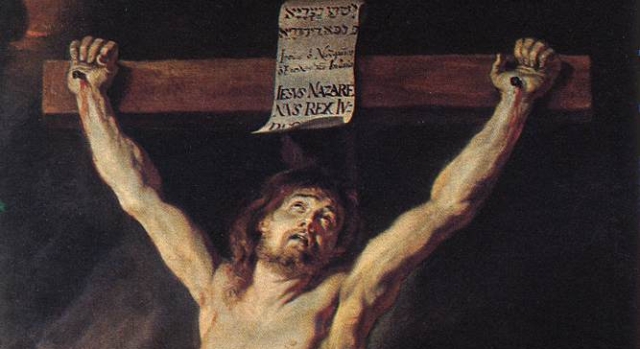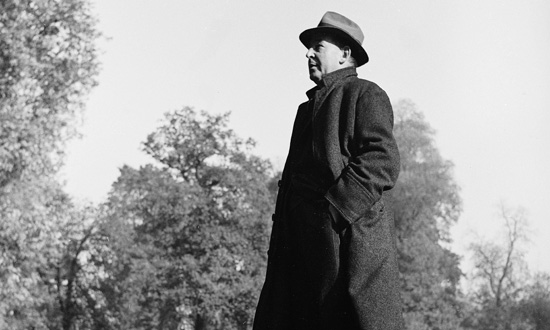I just finished reading Deceiving the Devil: Atonement, Abuse, and Ransom by feminist theologian Darby Kathleen Ray, partly at the suggestion of someone on Twitter. It’s essentially a critique of traditional models of the atonement from a feminist and liberationist perspective, but it creatively mines the tradition for a constructive counter-proposal.
Another contribution of this book is that Ray connects the concerns of (largely) North American feminists to the similar, but also importantly different, issues raised by Latin American liberation theologians and shows how each can enrich the other.
For example, despite their criticisms of certain traditional interpretations of the atonement, some liberation theologians have developed a more positive account of the significance of Jesus’ death. The suffering Jesus becomes a figure with whom the oppressed poor can identify, and this can give them strength in their struggle. Moreover, liberation theologians have shown how Jesus’ death is consonant with his life and ministry, which on this reading was about bringing mercy to the downtrodden and confronting forces of evil and oppression. On this view, Jesus’ death was a consummation of the way he lived and powerfully shows what nonviolent resistance to the powers that be looks like. Ray thinks this is a useful corrective to some feminist theologians’ refusal to attribute any salvific significance to the crucifixion.
Ray’s constructive proposal seeks to incorporate these insights but also to go beyond them by reclaiming imagery from the early church. The motif or model she develops is essentially a demythologized version of the patristic “ransom” theory where Jesus’ death tricks Satan into surrendering his rights over humanity. In the colorful images offered by some church fathers, Jesus is the bait on the fishhook or the cheese in the mousetrap that ensnares Satan. Humanity, by sinning, had put itself under Satan’s dominion, but by killing Jesus the innocent one, Satan forfeited any rights over us. (This is dramatically, and famously, portrayed in C.S. Lewis’s The Lion, the Witch and the Wardrobe.)
In Ray’s demythologized version, Jesus subverts or “outsmarts” evil by responding with nonviolent love instead of with coercive force. By killing Jesus, the forces of evil, which Ray identifies with oppressive social, political and economic structures rooted in a desire to dominate and control others, are exposed as bankrupt and lacking legitimacy.
The way of Jesus, culminating in his death, reveals the illegitimacy of coercive domination. Humanity’s enslavement to evil is loosened because Jesus, in his life and death, has established a new way of being in resistance of evil. This becomes a permanent possibility, accessible to all human beings, because it was “incarnated” in Jesus. This interpretation of the ransom motif could also be seen as a variety of Christus Victor — Jesus wins a paradoxical victory over the powers of evil be persisting in his mode of non-violent love, even to the point of death.
This, however, brings me to some of the qualms I have about Ray’s model. In the traditional Christus Victor model, the resurrection of Jesus plays an essential role. By raising him from death, God puts the stamp of approval on Jesus’ ministry, and shows that noncoercive love has the last word in the cosmos, appearances to the contrary notwithstanding. The resurrection is the locus of victory over the evil powers, although its meaning can never be separated from the cross.
However, the resurrection plays virtually no role in Ray’s discussion. The closest she comes is in saying that the community, when it follows Jesus’ lifestyle of nonviolent love, “resurrects” him. This could be because Ray simply doesn’t believe in a traditional version of Jesus’ resurrection. But it may also be because she wants to avoid seemingly tidy resolutions to the problem of evil.
Ray emphasizes the “tragic” nature of existence and the fact that all our efforts to resist evil are piecemeal. This seems to lead her to deny that there will be some kind of ultimate resolution–or at least downplay the possibility. She seems to worry that belief in any such divine intervention could lead to complacency about evil, something that she has argued is encouraged by certain traditional interpretations of the atonement.
I think one has to respect this refusal to prematurely declare victory over evil. Heaven knows that Christianity has been guilty of more than its fair share of triumphalism over the centuries. As Clark Williamson, Rosemary Radford Ruether, and other theologians focusing on Christian anti-Judaism have pointed out, Christianity has often lost the “proleptic” nature of the of redemption–the idea that Jesus’ resurrection is a sort of promissory note for an ultimate redemption that is still to come (whatever that may look like). On this view, evil has not been eradicated but continues to stalk the world in this time between the times. Too often, Christians have conflated the church and the kingdom, losing the eschatological hope for a redeemed creation.
Such an understanding of redemption might address some of Ray’s concerns about complacency in the face of evil, without surrendering Christianity’s traditional hope in God’s ultimate victory over evil. By downplaying the resurrection Ray’s re-tooled ransom theory ends up looking a lot like another version of exemplarism. Jesus embodies a way of living that Christians (and potentially others) can emulate, and his death reveals the bankruptcy of coercive domination (or what Walter Wink called “the domination system”). While this account of sin and its grip on human beings is powerful and illuminating, I wonder if the atonement as she interprets it is capable of liberating human beings from its power. In other words, it’s not clear on this account how Jesus’ life and death (and resurrection) save, as opposed to being inspiring examples of nonviolent resistance.
What this understanding of sin calls for, it seems to me, is a power that can truly liberate humans and which promises fulfillment and salvation for all. Of course, there’s always the possibility that such a hope is a form of wishful thinking and we should be content with what Scottish theologian John Macquarrie called the “austere ending” as one possible interpretation of the story of Jesus.* But I at least continue to hope that the alternative, “happy ending” is the true one. I’m also hopeful that this story can be a source of love and freedom for all creation rather than something that fosters abuse and suffering.
—————————————————
*In his Jesus Christ in Modern Thought, Macquarrie contends that there are two possible endings to the Jesus story, based on the historical evidence and a responsible theological interpretation. The “happy ending” of the Jesus story is the series of “mysteries” that follow the crucifixion–the descent into hell, the resurrection, the ascension and the second coming. This is obviously the convetional ending, the version of the story taught by most churches and believed by most Christians. It assures us that we will live beyond the grave and that at least some of us will be crowned with everlasting happiness. But there is also an “austere ending” that also provides a plausible interpretation of Jesus’ career and in which we can still find meaning. As Macquarrie writes, “Suppose we omitted the ‘joyful mysteries’ that traditionally came after the cross? Would that destroy the whole fabric of faith in Christ? I do not think so, for the two great distinctive Christian affirmations would remain untouched — God is love, and God is revealed in Jesus Christ. . . . If the highest virtue is the kind of love which the New Testament attributes to Jesus, then it seems to me that his victory over evil was already won in the agonizing hours before his death, and that it would remain decisive even if there were no subsequent events of resurrection and ascension.” (p. 412) Somewhat similar to Ray, in his treatment of the work of Christ, Macquarrie develops a demythologized version of Christus Victor, in which Jesus’ atonement consists in his loving to the point of death and establishing a new template or possibility for human living.









